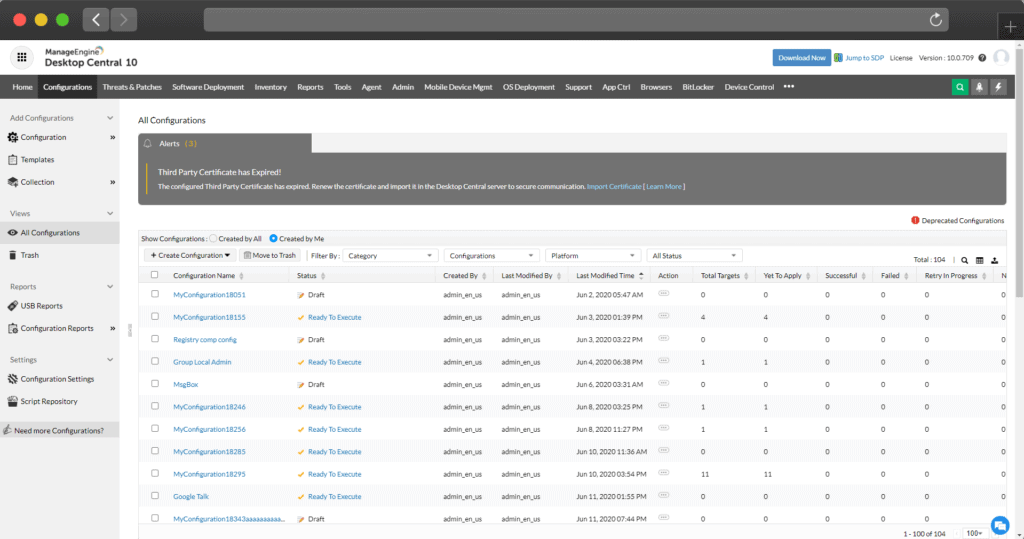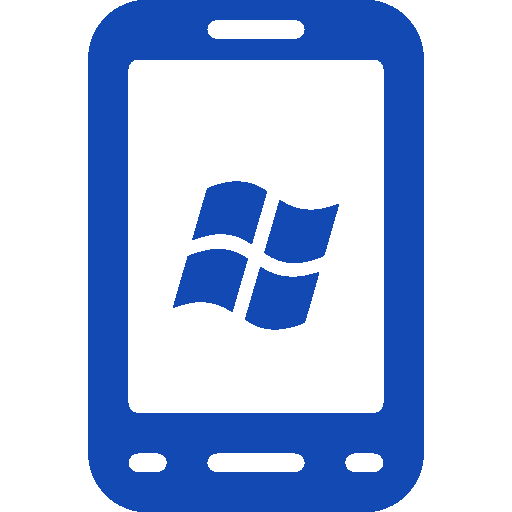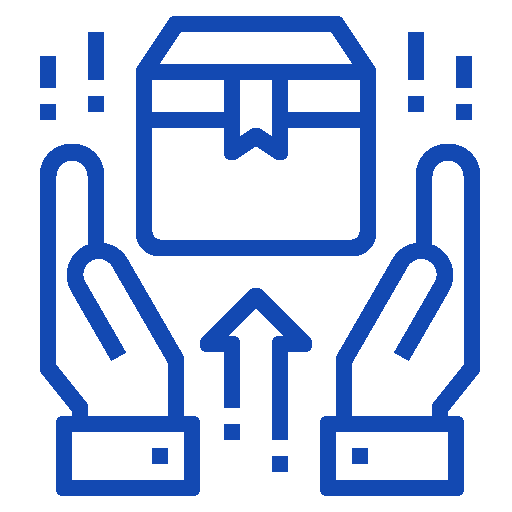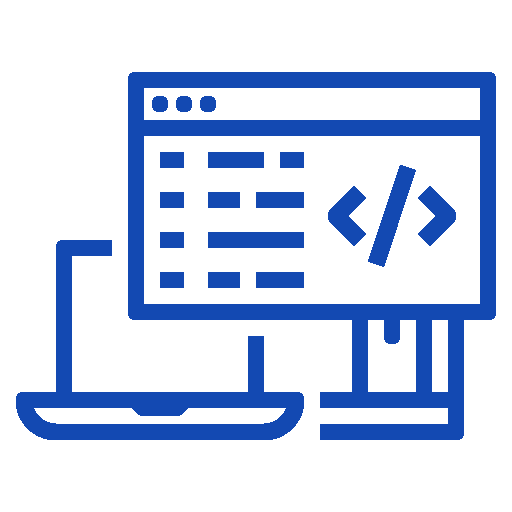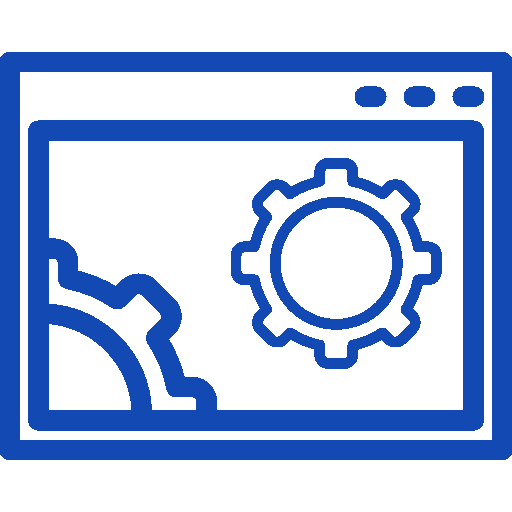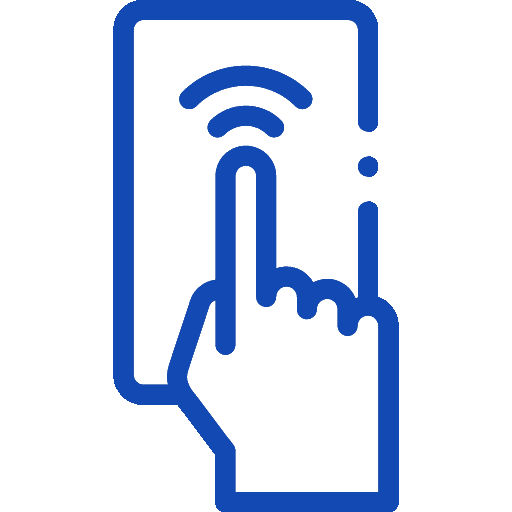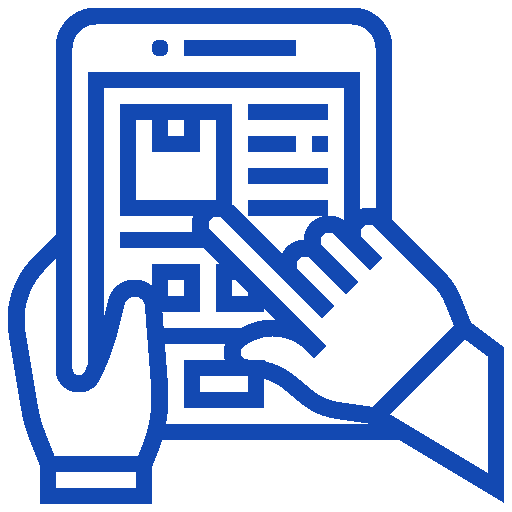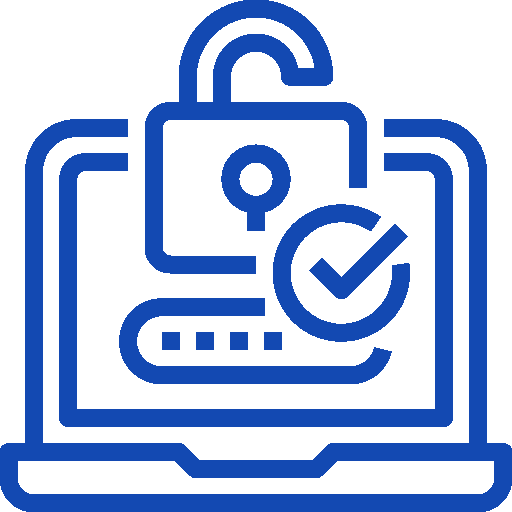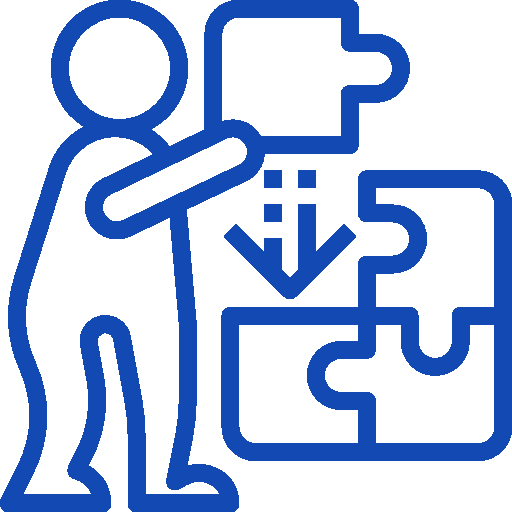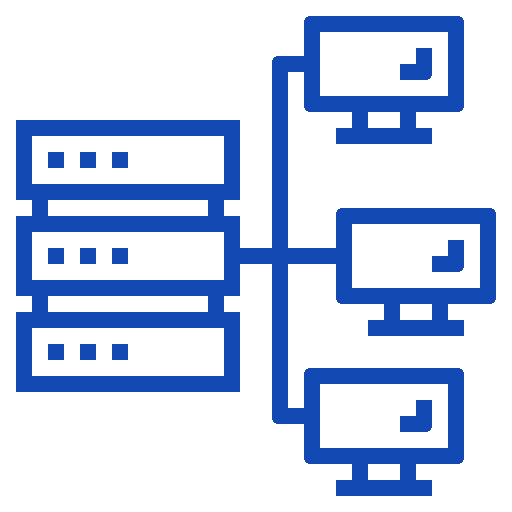
Unified Endpoint Management Software
ManageEngine Endpoint Central (Formerly Desktop Central) is a comprehensive desktop and mobile device management software. This unified endpoint management solution enables remote maintenance , configuration and management of all workstations, laptops and mobile devices in the company - with a single piece of software.
Endpoint Central (Formerly Desktop Central) allows to handle repetitive tasks in desktop management as the installation of patches , the distribution of new software or setting up desktop, computer, user or power settings simply and automate quickly . The software also supports in managing IT assets and software licenses and gives an overview of the current software usage in the company at all times. Furthermore, images of operating systems can be created with Endpoint Central (Formerly Desktop Central) and rolled out on other devices. The endpoint security extension offers a holistic approach to the security and management of all managed endpoints in enterprise network.
Over 25 predefined configurations as well as numerous preconfigured Active Directory reports simplify administrative tasks. With Endpoint Central (Formerly Desktop Central) can manage Windows and Mac computers as well as Linux systems in network.
Smartphones and tablets can be configured and managed with the Mobile Device Management features of Endpoint Central (Formerly Desktop Central) just like traditional PCs and notebooks. For companies that are explicitly looking for a solution for the management of their mobile devices, ManageEngine also offers an independent enterprise mobility management solution: ManageEngine Mobile Device Manager Plus.
What You Can Expect
Main Features of Endpoint Central (Formerly Desktop Central)
Some Perks
Advantages in Desktop & Mobile Device Management
Supported Operating Systems
Desktops & Laptops
Smartphones & Tablets
Editions
The Right Edition for Your Requirements
FAQ's
Frequently Asked Questions
What is Endpoint Central (Formerly Desktop Central) used for?
What are the system requirements for Endpoint Central (Formerly Desktop Central)?
Managing up to 10,000 computers with a single installation is possible amidst the variety of supporting systems:
Supported OS for Endpoint Central (Formerly Desktop Central) Distribution Servers
- Windows 7
- Windows 8
- Windows 8.1
- Windows 10
- Windows Server 2003
- Windows Server 2003 R2
- Windows Server 2008
- Windows Server 2008 R2
- Windows Server 2012
- Windows Server 2012 R2
- Windows Server 2016
- Windows Server 2019
What ports does Endpoint Central (Formerly Desktop Central) use?
- Enable agent-server communication.
- Access the web client.
What is a Desktop Agent?
The UserLock ‘Desktop‘ Agent is designed to audit, control, and protect workstations, servers, and terminal servers. This agent audits all interactive session activity on the machines and protects them by applying a user access control policy defined through protected account rules.
Which database does Endpoint Central (Formerly Desktop Central) support to store data?
Endpoint Central (Formerly Desktop Central) supports MySQL, PGSQL and MS SQL database to store data.
How do I install Endpoint Central (Formerly Desktop Central)?
Being the Swiss Partner of ManageEngine, Kidan is responsible for aiding with professional services, such as installing, implementing, configuring, training, and supporting the company to ensure an effective on-boarding of Endpoint Central (Formerly Desktop Central).
To make it even better, Kidan even provides advice on top of it all!
Get in touch with us to know more.
Want to continue the conversation?
Thank you for your interest in ManageEngine's Endpoint Central (Formerly Desktop Central) solution. Please fill out the form below to ask a question or request assistance.
Features Endpoint Central (Formerly Desktop Central)
Windows, Linux and Mac installations
IT inventory
Mobile Device Management
Integration & more
FAQ's
Frequently Asked Questions
What is Endpoint Central (Formerly Desktop Central) used for?
What are the system requirements for Endpoint Central (Formerly Desktop Central)?
Managing up to 10,000 computers with a single installation is possible amidst the variety of supporting systems:
Supported OS for Endpoint Central (Formerly Desktop Central) Distribution Servers
- Windows 7
- Windows 8
- Windows 8.1
- Windows 10
- Windows Server 2003
- Windows Server 2003 R2
- Windows Server 2008
- Windows Server 2008 R2
- Windows Server 2012
- Windows Server 2012 R2
- Windows Server 2016
- Windows Server 2019
What ports does Endpoint Central (Formerly Desktop Central) use?
- Enable agent-server communication.
- Access the web client.
What is a Desktop Agent?
The UserLock ‘Desktop‘ Agent is designed to audit, control, and protect workstations, servers, and terminal servers. This agent audits all interactive session activity on the machines and protects them by applying a user access control policy defined through protected account rules.
Which database does Endpoint Central (Formerly Desktop Central) support to store data?
Endpoint Central (Formerly Desktop Central) supports MySQL, PGSQL and MS SQL database to store data.
How do I install Endpoint Central (Formerly Desktop Central)?
Being the Swiss Partner of ManageEngine, Kidan is responsible for aiding with professional services, such as installing, implementing, configuring, training, and supporting the company to ensure an effective on-boarding of Endpoint Central (Formerly Desktop Central).
To make it even better, Kidan even provides advice on top of it all!
Get in touch with us to know more.
Want to continue the conversation?
Thank you for your interest in ManageEngine's Endpoint Central (Formerly Desktop Central) solution. Please fill out the form below to ask a question or request assistance.
Feature Overview Endpoint Central (Formerly Desktop Central) On-Premises
Feature overview Endpoint Central (Formerly Desktop Central) Cloud version
FAQ's
Frequently Asked Questions
What is Endpoint Central (Formerly Desktop Central) used for?
What are the system requirements for Endpoint Central (Formerly Desktop Central)?
Managing up to 10,000 computers with a single installation is possible amidst the variety of supporting systems:
Supported OS for Endpoint Central (Formerly Desktop Central) Distribution Servers
- Windows 7
- Windows 8
- Windows 8.1
- Windows 10
- Windows Server 2003
- Windows Server 2003 R2
- Windows Server 2008
- Windows Server 2008 R2
- Windows Server 2012
- Windows Server 2012 R2
- Windows Server 2016
- Windows Server 2019
What ports does Endpoint Central (Formerly Desktop Central) use?
- Enable agent-server communication.
- Access the web client.
What is a Desktop Agent?
The UserLock ‘Desktop‘ Agent is designed to audit, control, and protect workstations, servers, and terminal servers. This agent audits all interactive session activity on the machines and protects them by applying a user access control policy defined through protected account rules.
Which database does Endpoint Central (Formerly Desktop Central) support to store data?
Endpoint Central (Formerly Desktop Central) supports MySQL, PGSQL and MS SQL database to store data.
How do I install Endpoint Central (Formerly Desktop Central)?
Being the Swiss Partner of ManageEngine, Kidan is responsible for aiding with professional services, such as installing, implementing, configuring, training, and supporting the company to ensure an effective on-boarding of Endpoint Central (Formerly Desktop Central).
To make it even better, Kidan even provides advice on top of it all!
Get in touch with us to know more.
Want to continue the conversation?
Thank you for your interest in ManageEngine's Endpoint Central (Formerly Desktop Central) solution. Please fill out the form below to ask a question or request assistance.
Endpoint Central (Formerly Desktop Central) Professional Edition
Endpoint Central (Formerly Desktop Central) Enterprise Edition
Endpoint Central (Formerly Desktop Central) UEM Edition
Endpoint Central (Formerly Desktop Central) Security Edition
FAQ's
Frequently Asked Questions
What is Endpoint Central (Formerly Desktop Central) used for?
What are the system requirements for Endpoint Central (Formerly Desktop Central)?
Managing up to 10,000 computers with a single installation is possible amidst the variety of supporting systems:
Supported OS for Endpoint Central (Formerly Desktop Central) Distribution Servers
- Windows 7
- Windows 8
- Windows 8.1
- Windows 10
- Windows Server 2003
- Windows Server 2003 R2
- Windows Server 2008
- Windows Server 2008 R2
- Windows Server 2012
- Windows Server 2012 R2
- Windows Server 2016
- Windows Server 2019
What ports does Endpoint Central (Formerly Desktop Central) use?
- Enable agent-server communication.
- Access the web client.
What is a Desktop Agent?
The UserLock ‘Desktop‘ Agent is designed to audit, control, and protect workstations, servers, and terminal servers. This agent audits all interactive session activity on the machines and protects them by applying a user access control policy defined through protected account rules.
Which database does Endpoint Central (Formerly Desktop Central) support to store data?
Endpoint Central (Formerly Desktop Central) supports MySQL, PGSQL and MS SQL database to store data.
How do I install Endpoint Central (Formerly Desktop Central)?
Being the Swiss Partner of ManageEngine, Kidan is responsible for aiding with professional services, such as installing, implementing, configuring, training, and supporting the company to ensure an effective on-boarding of Endpoint Central (Formerly Desktop Central).
To make it even better, Kidan even provides advice on top of it all!
Get in touch with us to know more.
Want to continue the conversation?
Thank you for your interest in ManageEngine's Endpoint Central (Formerly Desktop Central) solution. Please fill out the form below to ask a question or request assistance.
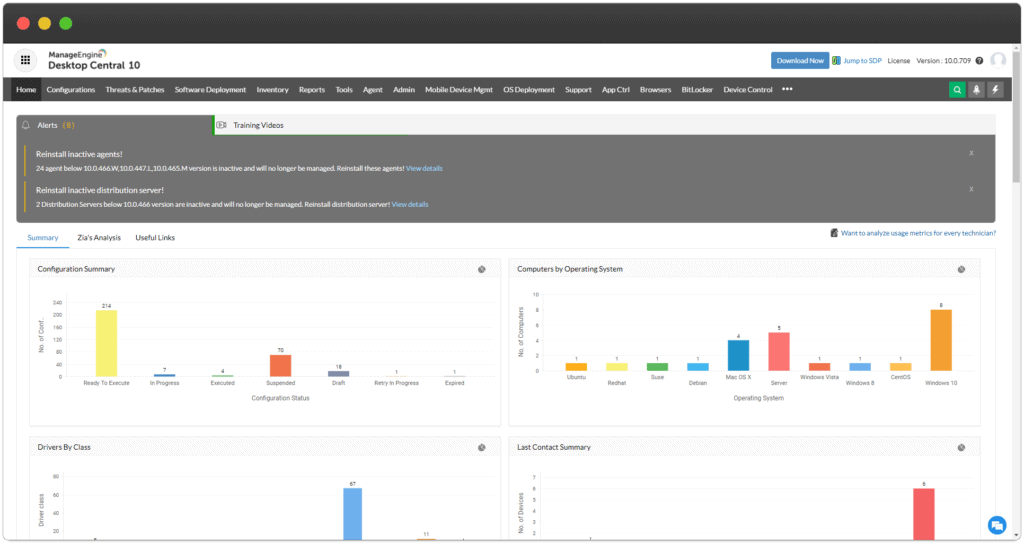
FAQ's
Frequently Asked Questions
What is Endpoint Central (Formerly Desktop Central) used for?
What are the system requirements for Endpoint Central (Formerly Desktop Central)?
Managing up to 10,000 computers with a single installation is possible amidst the variety of supporting systems:
Supported OS for Endpoint Central (Formerly Desktop Central) Distribution Servers
- Windows 7
- Windows 8
- Windows 8.1
- Windows 10
- Windows Server 2003
- Windows Server 2003 R2
- Windows Server 2008
- Windows Server 2008 R2
- Windows Server 2012
- Windows Server 2012 R2
- Windows Server 2016
- Windows Server 2019
What ports does Endpoint Central (Formerly Desktop Central) use?
- Enable agent-server communication.
- Access the web client.
What is a Desktop Agent?
The UserLock ‘Desktop‘ Agent is designed to audit, control, and protect workstations, servers, and terminal servers. This agent audits all interactive session activity on the machines and protects them by applying a user access control policy defined through protected account rules.
Which database does Endpoint Central (Formerly Desktop Central) support to store data?
Endpoint Central (Formerly Desktop Central) supports MySQL, PGSQL and MS SQL database to store data.
How do I install Endpoint Central (Formerly Desktop Central)?
Being the Swiss Partner of ManageEngine, Kidan is responsible for aiding with professional services, such as installing, implementing, configuring, training, and supporting the company to ensure an effective on-boarding of Endpoint Central (Formerly Desktop Central).
To make it even better, Kidan even provides advice on top of it all!
Get in touch with us to know more.
Want to continue the conversation?
Thank you for your interest in ManageEngine's Endpoint Central (Formerly Desktop Central) solution. Please fill out the form below to ask a question or request assistance.
Endpoint Central (Formerly Desktop Central) Plus Help Document
FAQ's
Frequently Asked Questions
What is Endpoint Central (Formerly Desktop Central) used for?
What are the system requirements for Endpoint Central (Formerly Desktop Central)?
Managing up to 10,000 computers with a single installation is possible amidst the variety of supporting systems:
Supported OS for Endpoint Central (Formerly Desktop Central) Distribution Servers
- Windows 7
- Windows 8
- Windows 8.1
- Windows 10
- Windows Server 2003
- Windows Server 2003 R2
- Windows Server 2008
- Windows Server 2008 R2
- Windows Server 2012
- Windows Server 2012 R2
- Windows Server 2016
- Windows Server 2019
What ports does Endpoint Central (Formerly Desktop Central) use?
- Enable agent-server communication.
- Access the web client.
What is a Desktop Agent?
The UserLock ‘Desktop‘ Agent is designed to audit, control, and protect workstations, servers, and terminal servers. This agent audits all interactive session activity on the machines and protects them by applying a user access control policy defined through protected account rules.
Which database does Endpoint Central (Formerly Desktop Central) support to store data?
Endpoint Central (Formerly Desktop Central) supports MySQL, PGSQL and MS SQL database to store data.
How do I install Endpoint Central (Formerly Desktop Central)?
Being the Swiss Partner of ManageEngine, Kidan is responsible for aiding with professional services, such as installing, implementing, configuring, training, and supporting the company to ensure an effective on-boarding of Endpoint Central (Formerly Desktop Central).
To make it even better, Kidan even provides advice on top of it all!
Get in touch with us to know more.
Want to continue the conversation?
Thank you for your interest in ManageEngine's Endpoint Central (Formerly Desktop Central) solution. Please fill out the form below to ask a question or request assistance.
Fill up the form to get a personalized Quote, that best suits your requirements.
How We May Help You ?
Customer Service & Support
We value and believe in the relationships we have with our customers as they represent the most crucial part of our organization.
Kidan provides customer service and support via email. To contact our support teams, please feel free to send us an email to the below addresses:
A telephone hotline is available to our customers to receive immediate support and advise during business hours and days :
Telephone: +41 58 598 60 40
Business days: Monday – Friday
Business hours: 8:00 AM – 5:00 PM (Swiss time)
We also provide a live chat to ensure you get a quick response. You can reach us through our live chat widget on the bottom right of your screen. The availability of our chat support is:
- Monday – Friday
- 8:00 AM to 5:00 PM Swiss Time
FAQ's
Frequently Asked Questions
What is Endpoint Central (Formerly Desktop Central) used for?
What are the system requirements for Endpoint Central (Formerly Desktop Central)?
Managing up to 10,000 computers with a single installation is possible amidst the variety of supporting systems:
Supported OS for Endpoint Central (Formerly Desktop Central) Distribution Servers
- Windows 7
- Windows 8
- Windows 8.1
- Windows 10
- Windows Server 2003
- Windows Server 2003 R2
- Windows Server 2008
- Windows Server 2008 R2
- Windows Server 2012
- Windows Server 2012 R2
- Windows Server 2016
- Windows Server 2019
What ports does Endpoint Central (Formerly Desktop Central) use?
- Enable agent-server communication.
- Access the web client.
What is a Desktop Agent?
The UserLock ‘Desktop‘ Agent is designed to audit, control, and protect workstations, servers, and terminal servers. This agent audits all interactive session activity on the machines and protects them by applying a user access control policy defined through protected account rules.
Which database does Endpoint Central (Formerly Desktop Central) support to store data?
Endpoint Central (Formerly Desktop Central) supports MySQL, PGSQL and MS SQL database to store data.
How do I install Endpoint Central (Formerly Desktop Central)?
Being the Swiss Partner of ManageEngine, Kidan is responsible for aiding with professional services, such as installing, implementing, configuring, training, and supporting the company to ensure an effective on-boarding of Endpoint Central (Formerly Desktop Central).
To make it even better, Kidan even provides advice on top of it all!
Get in touch with us to know more.
Want to continue the conversation?
Thank you for your interest in ManageEngine's Endpoint Central (Formerly Desktop Central) solution. Please fill out the form below to ask a question or request assistance.
